Key Takeaways
1. Slack is essential for organizational flexibility and innovation
Slack is the missing ingredient required for all change.
Defined slack. Slack refers to the degree of freedom within an organization that allows for change, growth, and innovation. It's not wasted time or resources, but rather a strategic reserve that enables companies to adapt and evolve.
Benefits of slack. Organizations with adequate slack are more responsive to market changes, better at retaining key personnel, and more capable of investing in the future. Slack provides the necessary breathing room for employees to think creatively, experiment with new ideas, and develop innovative solutions.
Consequences of eliminating slack. Companies that obsessively remove all slack in pursuit of efficiency often find themselves unable to change direction when needed. This can lead to a dangerous situation where an organization can accelerate but not steer, ultimately resulting in failure to adapt to changing market conditions.
2. Excessive busyness hinders productivity and growth
People under time pressure don't think faster.
Myth of constant busyness. Many organizations believe that being constantly busy is a sign of productivity and success. However, this mentality often leads to decreased effectiveness and innovation.
Drawbacks of overwork. Excessive busyness can result in:
- Reduced quality of work
- Increased employee burnout
- Higher turnover rates
- Ineffective use of time during normal working hours
Balance is key. Successful companies often appear more laid-back, with a focus on energy and enjoyment rather than frantic activity. This approach allows for better problem-solving, creativity, and long-term strategic thinking.
3. Pressure and aggressive schedules often backfire
"Aggressive schedule" is a kind of code phrase—understood implicitly by all involved—for a schedule that is absurd, that has no chance at all of being met.
Counterproductive pressure. Applying excessive pressure on employees or setting unrealistic deadlines rarely leads to improved performance. Instead, it often results in:
- Decreased work quality
- Increased stress and burnout
- Higher likelihood of project failure
Realistic scheduling. Effective managers understand the limitations of their team and set achievable goals. They recognize that pushing too hard can lead to diminishing returns and potential long-term damage to the organization.
Alternative approaches. Instead of relying on pressure, successful organizations focus on:
- Clear communication of priorities
- Providing necessary resources and support
- Allowing for reasonable flexibility in timelines
4. Quality requires time and cannot be rushed
Quality takes time. Even quality in the "defects only" sense takes time.
Redefining quality. True quality goes beyond the absence of defects. It encompasses uniqueness, usefulness, and the ability to redefine how people think about a product or service.
Investing in quality. Organizations must be willing to:
- Allocate sufficient time for development and refinement
- Prioritize fewer, high-impact projects over numerous mediocre ones
- Resist the urge to rush products to market prematurely
Long-term benefits. Although investing in quality may seem inefficient in the short term, it often leads to:
- Increased customer satisfaction and loyalty
- Stronger brand reputation
- Reduced need for costly fixes and updates later on
5. Effective change management depends on trust and safety
The safety that is required for essential change is a sure sense that no one will be mocked, demeaned, or belittled while struggling to achieve renewed mastery.
Creating psychological safety. For change to be successful, employees must feel safe to take risks, make mistakes, and learn from them. This requires:
- A culture that values learning and growth
- Leaders who model vulnerability and openness
- Clear communication about the reasons for and benefits of change
Building trust. Effective change managers:
- Give trust before it's fully earned
- Lead by example
- Communicate transparently about challenges and uncertainties
Overcoming resistance. By fostering a safe and trusting environment, organizations can reduce resistance to change and increase the likelihood of successful transformation.
6. Middle management plays a crucial role in organizational reinvention
The key role of middle management is reinvention.
Middle managers as change agents. Middle managers are uniquely positioned to drive organizational change because they:
- Understand both high-level strategy and ground-level operations
- Can translate vision into actionable plans
- Have the networks and relationships to influence others
Enabling middle management. To foster reinvention, organizations should:
- Provide middle managers with sufficient slack time for strategic thinking
- Encourage collaboration and knowledge-sharing among peer managers
- Empower middle managers to experiment and take calculated risks
Dangers of eliminating middle management. Companies that have drastically reduced middle management layers often find themselves unable to effectively implement change or adapt to new market conditions.
7. Risk management is about planning for both success and failure
Risk management is—take a deep gulp of air here, this is going to be unsettling—a discipline of planning for failure.
Reframing risk. Effective risk management isn't about avoiding all risks, but rather:
- Identifying potential risks and their impacts
- Developing strategies to mitigate or manage those risks
- Allocating resources to handle both positive and negative outcomes
Balancing optimism and realism. While it's important to strive for success, organizations must also:
- Acknowledge the possibility of failure
- Create contingency plans for various scenarios
- Communicate transparently about risks to stakeholders
Benefits of risk management. By explicitly addressing uncertainties, organizations can:
- Make more informed decisions
- Increase stakeholder confidence
- Pursue ambitious goals while minimizing potential downsides
Last updated:
FAQ
What's "Slack: Getting Past Burnout, Busywork, and the Myth of Total Efficiency" about?
- Core Theme: The book by Tom DeMarco explores the concept of "slack" as a necessary component for organizational change and growth. It challenges the obsession with efficiency and highlights the importance of flexibility.
- Efficiency vs. Flexibility: DeMarco argues that the more efficient an organization becomes, the harder it is to change. Slack is presented as the missing ingredient required for all change.
- Organizational Health: The book provides a prescription for building a capacity to change into modern enterprises, emphasizing that a little inefficiency can lead to greater effectiveness.
Why should I read "Slack: Getting Past Burnout, Busywork, and the Myth of Total Efficiency"?
- Understanding Burnout: It offers insights into how the pursuit of total efficiency can lead to burnout and busywork, which are detrimental to both individuals and organizations.
- Practical Advice: The book provides practical advice for managers on how to introduce slack into their organizations to foster change and growth.
- Challenging Norms: It challenges conventional management practices and encourages readers to rethink their approach to efficiency and productivity.
What are the key takeaways of "Slack: Getting Past Burnout, Busywork, and the Myth of Total Efficiency"?
- Slack is Essential: Slack is necessary for change, growth, and organizational learning. It allows for flexibility and responsiveness.
- Efficiency vs. Effectiveness: Organizations often sacrifice effectiveness for efficiency, which can hinder their ability to adapt and innovate.
- Risk Management: Effective risk management involves planning for failure and setting aside resources to handle potential setbacks.
How does Tom DeMarco define "slack" in the book?
- Definition of Slack: Slack is the degree of freedom required to effect change. It is the time when reinvention happens, allowing organizations to breathe and reinvent themselves.
- Natural Enemy of Efficiency: Slack is the natural enemy of efficiency, and vice versa. Organizations need to balance the two to remain effective.
- Organizational Breathing Room: Slack provides the necessary breathing room for organizations to adapt, learn, and grow.
What are the best quotes from "Slack: Getting Past Burnout, Busywork, and the Myth of Total Efficiency" and what do they mean?
- "People under time pressure don’t think faster." This quote by Tim Lister highlights that pressure does not enhance cognitive speed, challenging the notion that more pressure leads to better performance.
- "A penny saved is not a penny earned." DeMarco argues that cutting costs, especially in areas like R&D, can harm long-term growth and innovation.
- "Overworked managers are doing things they shouldn’t be doing." This emphasizes the importance of managers focusing on strategic tasks rather than getting bogged down in operational details.
How does "Slack" address the issue of burnout and busywork?
- Burnout Causes: The book identifies the relentless pursuit of efficiency and the elimination of slack as key contributors to burnout and busywork.
- Busywork Consequences: Busywork is often mistaken for productivity, but it can lead to stress and reduced effectiveness.
- Solution through Slack: Introducing slack can reduce stress, improve morale, and enhance overall productivity by allowing time for strategic thinking and innovation.
What is the "Myth of Total Efficiency" according to Tom DeMarco?
- Myth Explained: The myth is the belief that organizations are only effective when all workers are constantly busy, which DeMarco argues is a dangerous delusion.
- Efficiency vs. Change: The book posits that total efficiency makes it difficult for organizations to change direction and adapt to new challenges.
- Real-World Impact: DeMarco provides examples of how this myth leads to overcommitment, aggressive schedules, and ultimately, organizational failure.
How does "Slack" propose organizations manage risk?
- Risk Management Approach: The book advocates for planning for failure and setting aside resources to handle potential setbacks, rather than assuming everything will go perfectly.
- Explicit Declaration: Risk management involves the explicit declaration of uncertainty and the creation of a risk reserve to cover potential costs.
- Mitigation Strategies: Organizations should have pre-materialization plans and mitigation strategies to reduce the impact of risks when they materialize.
What role does middle management play in organizational change according to "Slack"?
- Reinvention Role: Middle management is crucial for reinvention and change, as they are positioned to understand both the strategic vision and operational realities.
- Slack for Managers: Managers need slack to focus on strategic tasks and drive change, rather than being consumed by day-to-day operations.
- Collaboration and Learning: Middle managers should work together to foster a culture of learning and innovation within the organization.
How does "Slack" suggest organizations balance efficiency and effectiveness?
- Balancing Act: Organizations should aim to be both efficient and effective, but prioritize effectiveness to ensure they are moving in the right direction.
- Fisher’s Theorem: The book references Fisher’s theorem, which states that the more optimized an organism is, the less adaptable it becomes, highlighting the need for balance.
- Strategic Flexibility: By maintaining some slack, organizations can remain flexible and responsive to changes in the market and environment.
What is the significance of "The Needle in the Haystack" fable in "Slack"?
- Fable Summary: The fable illustrates the importance of agility and adaptability in achieving goals, even when the original goal changes.
- Efficiency vs. Ingenuity: It suggests that while efficiency is important, ingenuity, risk-taking, and insight are crucial for long-term success.
- Changing Goals: The fable emphasizes the need for organizations to recognize and adapt to changing goals and opportunities.
How does "Slack" redefine the concept of leadership?
- Leadership vs. "Leadership": The book distinguishes between true leadership, which involves vision and enrolling others in a shared agenda, and "leadership," which is mere posturing.
- Trust and Empowerment: True leaders gain trust by giving trust and empowering others, fostering a culture of collaboration and innovation.
- Visionary Leadership: Visionary leaders articulate a clear direction and inspire others to embrace change, even in the face of uncertainty.
Review Summary
Slack is highly praised for challenging conventional business wisdom about efficiency and productivity. Many reviewers found the book insightful, offering valuable perspectives on managing knowledge workers, risk, and organizational change. DeMarco argues for the importance of "slack" time in fostering innovation and adaptability. While some critics felt the book lacked concrete solutions or data, most readers appreciated its thought-provoking ideas about work culture, management practices, and the pitfalls of excessive busyness. The book's relevance and applicability to modern workplaces were frequently noted.
Similar Books

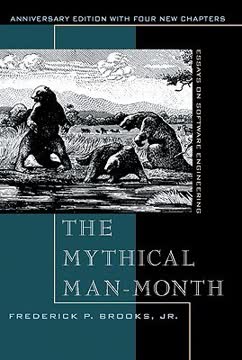
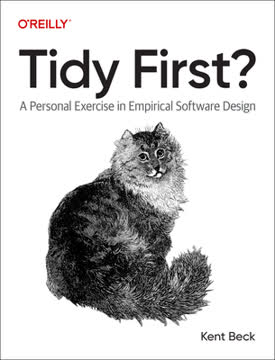


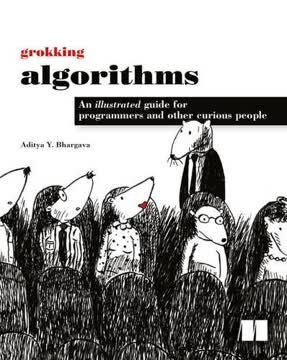


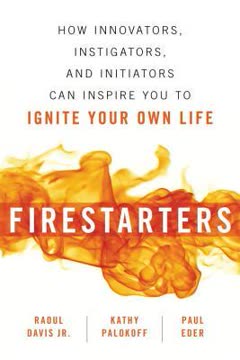
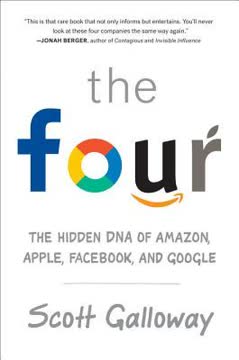
Download PDF
Download EPUB
.epub digital book format is ideal for reading ebooks on phones, tablets, and e-readers.





